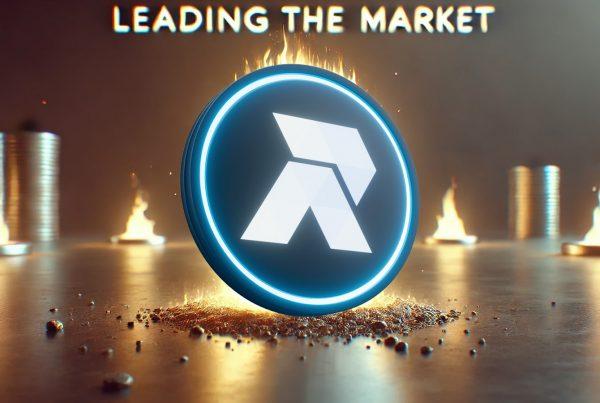Mike Miglio is the CEO and co-founder of Bridge Mutual. He is also the managing partner of a boutique cryptocurrency law firm that started in 2017. Mike’s clients include QTUM, Akropolis, Certik, and Gate.io, among others. He first invested in the space in 2016, and has been involved in cryptocurrency full-time ever since.
Mike, can you briefly tell us about Bridge Mutual? What makes Bridge Mutual special?
Bridge Mutual is a decentralized, DAO-governed, p2p/p2b discretionary insurance platform that provides coverage for stablecoins ($20b+ TVL), smart contracts ($15b+ TVL), and exchanges. This is the best way to explain it in one sentence.
We are the first platform offering decentralized insurance for stablecoins and exchanges. This is the primary difference between ourselves and most of the competitors. The last time I checked, all of our competitors are only offering smart contract insurance, though this may have changed. Other than this, each of the platforms are using slightly different token models and voting models.
What puts BMI ahead of other decentralized insurance platforms?
To start off, I want to say that we respect all of our “competitors”, and that the decentralized insurance industry will require multiple platforms in order to survive. In the real world, insurance companies insure each other. This will also be the case in crypto. Having multiple active insurance protocols working together will de-risk the space as a whole, serving as a bridge for traditional finance to enter the space.
At the time of writing, there are a handful of insurance platforms in development. All of us are a little different from each other. The most prominent platform currently has about $100M TVL (total value locked). The primary ways in which we are different from them are:
- We are migrating to Polkadot when Polkadot launches, this is to avoid high ETH gas fees;
- We will not require KYC to use our platform or hold our token (Nexus requires KYC and only verified addresses can receive tokens.)
- The value within our coverage pools are being reinvested automatically, on-chain to other protocols (10-15+) such as Aave and Kyber network in order to create a yield for our users.
- Users on our network will receive a greater portion of profit sharing from Premiums.
- You can buy insurance for stablecoins and centralized exchanges to cover crashes and hacks.
- There is a 3-phase voting system that makes policy holders vote on the first phase, coverage providers vote on the second phase, and “trusted stakers” vote on the third phase. Trusted stakers are platform participants that have voted correctly multiple times in the past, and they receive a better reward than other voters.
There is more to add to this list, but the answer may be too long. I encourage everyone to download our pitch deck.
Usually people think about insurance after something gets damaged. We saw many various cases recently – crypto attacks, liquidity crises, hacks. How can Bridge Mutual protect us against these situations?
How the platform can protect you depends on the type of insurance. For stablecoin insurance, the platform protects you in the event of a price drop, and the claims are handled instantly and automatically. If the price of a stablecoin drops beneath a specific threshold for a set period of time, anyone with active coverage for that asset may make a claim and be paid back. This is an oversimplified explanation of how *stablecoin* insurance works.
The smart contract and centralized exchange insurance are different. It goes through a voting process involving the users on Bridge, and there is a 3-phase voting process in place to make sure people vote honestly. This system is much more complex than I am explaining here.
Could you tell us about the BMI token sales process?
We have just started our private token sale, actually. The BMI token and the platform will be launched on the same day. All BMI tokens being sold before launch are being done privately via SAFTs. The team has been very critical and selective of who it sells tokens to, and our private sale has been heavily oversubscribed. The team has only given allocations to groups that meet the following criteria: 1) a strong influence on the market or an impressive following on social media; 2) does not have a reputation for dumping; and 3) understands the long-term value proposition of the project.
Because of how much interest there has been, we are expecting a strong secondary market demand after launch. Also, because the platform will be live at launch, we expect to see a large number of participants rushing to provide insurance coverage for their favorite projects. So far the interest has been next-level. We’re speaking to a few large funds and exchanges now.
Why did you choose Polkadot instead of participating in the Ethereum network?
To clarify, Polkadot hasn’t launched yet and there is no official release date. Because of this, Bridge will likely finish development before Polkadot is launched. It’s possible to launch a private chain on polkadot, but it isn’t ideal for development or security.
In order to make sure that we can launch without issues, we are coding the project in solidity and launching on the Ethereum network. After Polkadot releases, we will migrate the project over to Polkadot via a solidity-compatible parachain (we want to use Edgeware). The reason we want to be on Polkadot is to take advantage of the lower fees. Nexus Mutual is on Ethereum, and what we are seeing there is that people are not voting on insurance claims when it costs $5 to $15 in gas fees to vote. The chance of a claim being handled properly and honestly correlates to the number of people that are voting on that claim. If there is a low voter response, then valid claims could get rejected, and invalid claims could get accepted, damaging the platform’s credibility.
What awaits us for Bridge Mutual in the future, what are your plans?
The goal for Bridge Mutual is to be 100% decentralized and DAO-managed. So users should look forward to being a part of our governance. In addition to that, we’re already exploring ways for Bridge Mutual to tap into some traditional market insurance. There are some platforms that focus on traditional coverage, and we’ll be studying them closely to see if we can provide an even better solution.



